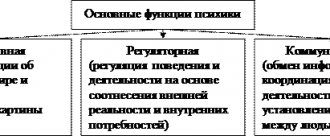Children with mental retardation (mental development delay) are included in a special group of people mixed in terms of the degree of psychophysiological development. Psychiatrists classify mental retardation as a class of mild mental development disorders. Mental retardation today is considered a common type of mental pathology at an early age. The presence of inhibition of the development of mental processes should be discussed only on the condition that the individual has not yet gone beyond the boundaries of the primary school period. In cases where symptoms of mental retardation are observed during the high school phase, one should already talk about mental retardation or infantilism. The deviation, expressed in a delay in mental formation, occupies a position between abnormal development and the norm.
What is ZPR? An individual with mental retardation is not characterized by the presence of serious disorders in the formation of mental processes, such as mental retardation or primary underdevelopment of the motor or visual system. The main difficulties they experience are usually associated with anomalies in social adaptation and educational activities. Due to the slowdown in the formation of certain mental functions, these difficulties are observed in children.
Development of children with mental retardation
Approximately 50% of unsuccessful schoolchildren are children with a history of a diagnosis of mental retardation.
The developmental characteristics of children with mental retardation lead them to school failure. That is why specialized educational institutions - schools and special equalization classes or correctional and developmental classes - are created to educate such children.
The characteristics of children with mental retardation are more often discovered after they start studying in a preschool organization or school. It is characterized by a slow rate of development of certain mental processes, immaturity of the individual, and mild disorders of the cognitive sphere.
Mental retardation in children is characterized by persistent mild intellectual disability and reversibility of development with a weakly expressed desire for compensation, which is possible only in the circumstances of specialized training and competent upbringing. Due to disturbances over a fairly long period, children experience immaturity of the nervous system of a functional nature. This, in turn, is expressed in the weakness of such mental processes as excitation and inhibition, and difficulties in forming complex connections.
Most mental functions (for example, spatial representations, cognitive processes, etc.) are characterized by a complex complex structure and are based on the coordination of the actions of several functional systems. As a result, the formation of this kind of actions in children with mental retardation is slowed down and proceeds differently when compared with normally developing ones. As a result, the corresponding mental functions are not formed in the same way as in healthy children.
A set of activities and a program for children with mental retardation is focused on development and is aimed at developing the mental abilities of children with a history of mental retardation and supporting the learning process at school. Modern practice of upbringing and specialized training of children with mental retardation provides the opportunity to obtain a positive prognosis in children’s assimilation of the curriculum of a general education institution with proper methodological organization and psychological and pedagogical work.
The mental development of children with mental retardation is based on helping them master their own mental activity and its core structural elements (for example, regulatory or motivational-guiding). The general focus of working with children initially comes down to group activities, in which the initiative to organize them belongs to the teacher, moving on to individual actions, where the initiative belongs to the child; comes down to the teacher setting a goal and creating the mood for implementation.
Working with children with mental retardation is aimed at developing the skill of collective goal setting, and then the skill of developing individual goal setting with an appropriate emotional attitude to this process, practical activity and its fruits. Initially, the children's work is assessed directly by the teacher. The task of teachers is to develop the skill of collective assessment, and then individual self-assessment.
The varied work of children, of a feasible nature, and various manipulations with natural matter provide significant opportunities for systematizing, deepening and expanding children's knowledge about their immediate environment, developing general ideas and ordinary everyday concepts.
Mental activity with children with mental retardation is formed on a foundation of practical actions. Great emphasis is placed on the selection of outdoor games with their gradual complication, which occurs as follows. First, the number of rules increases, then the rules become more complex. First, each member of the group follows the rules, and then only the group representative.
Also important are creative activities for children with mental retardation, in which special emphasis is placed on productive forms of art, for example, modeling, drawing, appliqué, etc. Based on practical activities, with the focused work of the teacher, it is possible to quickly develop mental activity that will be based on general ideas and reasoning of a verbal and logical nature.
Causes of developmental problems
The causes of ZPR are conventionally divided into several categories: gestational disorders, complications during childbirth, diseases at an early age and social factors.
Mental retardation can result from:
- chronic asthenia;
- renal, heart and liver failure;
- bronchial asthma, pneumonia and other pathologies of the respiratory system;
- traumatic brain injuries, neuroinfections (encephalitis, meningitis);
- dystrophy, cachexia, rickets;
- chronic pathologies in the mother (diabetes mellitus, thyroid disease, alcoholism, drug addiction, heart disease, etc.);
- taking potent drugs and infectious diseases during pregnancy (rubella, toxoplasmosis, influenza, mumps, STDs, etc.);
- early toxicosis, gestosis, Rh conflict;
- complications of childbirth (rapid and protracted labor, entanglement, injuries due to medical errors);
- prematurity, birth trauma, hypoxia in the newborn;
- hearing, speech or vision impairment at an early age;
- unfavorable family situation, limited social contacts, pedagogical neglect;
- low level of intelligence and mental disorders in parents.
Risk factors include a late or difficult first birth, gestational complications in previous pregnancies, multiple pregnancies, emotional disturbances, stress, excess weight and endocrine diseases of the mother.
The hereditary factor (presence of mental retardation in parents) influences the anamnesis less than with mental retardation.
Characteristics of children with mental retardation
Children suffering from this disorder are characterized by a number of extraordinary features, which become more noticeable after enrollment in a school institution, since such children are not fully ready for learning.
The characteristics of children with mental retardation lie in the undeveloped skills, lack of knowledge to pass and master school material. Such children cannot master numeracy, writing and reading skills in the absence of specialized help. It is quite difficult for them to comply with the norms of behavior accepted in school institutions. These children also experience difficulties in voluntary activities. The listed features are aggravated by the weakened state of the nervous system. We can identify typical difficulties inherent in all children suffering from this pathology.
The speech of children with mental retardation is generally formed with some degree of lag behind its age norm. A child with developmental delay cannot construct a short retelling with a related meaning of a story or fairy tale. He can only form isolated and often ungrammatical sentences. Sluggishness of the articulatory apparatus causes insufficient pronunciation of some sounds.
Children with a delay in the formation of mental processes do not fit into the climate of the classroom due to their own naivety, lack of independence, and directness. They are characterized by frequent conflicts with peers, failure to perceive and comply with school instructions. At the same time, they feel great about themselves in gaming activities and resort to them when there is a need to escape from difficult educational activities. However, games with strict boundaries (role-playing games) are inaccessible to children and even contribute to their fear or provoke a refusal to play.
A child suffering from mental retardation experiences difficulty in organizing personal, purposeful activities. After all, he cannot recognize himself as a student and is not able to understand the motivation of learning activities or its goals.
Children with mental retardation perceive information coming from the teacher at a slower pace and process it in a similar way. For a more complete perception, the child needs visual and practical support and clearly detailed instructions. Underdevelopment of verbal and logical thinking leads to the expenditure of more time to master reduced mental operations.
Children with mental retardation are characterized by a low level of performance and fatigue. The rate of their performance is much lower compared to their peers. As a result, education in a regular secondary school is inaccessible for them. Educating such children in a regular secondary school can cause them more harm than good. In a regular school institution, children for the first time begin to realize their own difference from their peers, their failure as a student, uncertainty about their own potential appears, and fear of possible punishment arises.
Children with mental retardation have a reduced level of cognitive activity, which is expressed in a lack of inquisitiveness and curiosity. They are also characterized by impulsiveness, disinhibition, lethargy, and increased motor activity. In such children, there is an emphasis on unimportant details (secondary), omission of a significant logical moment, and a violation of the transfer of the order of events. Children with delayed development tend to jump from one topic of conversation to another.
Children with mental retardation are characterized by a shallow mind. When studying new material, they note as the main points the first details that catch their eye, or phenomena located on the surface, while they do not try to understand the essence of the information. Therefore, it is difficult for them to form meaningful generalizations. Such students are characterized by errors of confusion of concepts and a formal approach to mastering the material. Associated with the surface of the intellectual sphere is its inertia. Students have difficulty mastering the meaning of new concepts and possible methods of operating them. In the course of mastering concepts, schoolchildren are prone to using them in a stereotypical manner; they can hardly give up habitual operations with them if they are convinced of their groundlessness. Children with developmental delay, in most cases, avoid mental stress. It is easier for them to solve problems using familiar methods, even if they are quite cumbersome. Along with this, schoolchildren with this disease are characterized by instability of mental processes. They are inclined to act in familiar ways, but any random moment can confuse them. The instability of mental processes is also expressed in the difficulty of orienting to a group of features that form the meaning of the acquired concept. Students with this anomaly are also distinguished by a weak consciousness of their own thinking; in other words, their understanding of how they solve a problem is poorly expressed.
The speech of children with mental retardation is characterized by its own shortcomings, which are easily perceptible during normal communication. As a result, specific difficulties arise in mastering reading skills and mastering the alphabet. The limited supply of information and knowledge about the environment and structure of the world of such children is explained by the poverty of verbal communications and the lag in the development of the cognitive sphere.
Children with mental retardation very rarely ask adults questions. They are not inquisitive. Children with delayed mental development have a reduced need for communicative interaction, both with peers and with adults. Most of them show increased anxiety towards significant adults. A new individual in their environment causes significantly less attention compared to a new object.
We can highlight as the leading personality traits of children: weak emotional stability, disorder of self-control in activities, aggressive behavior, difficulties in adapting to a group in play or educational processes, fussiness, uncertainty, mood swings, mannerisms, lack of differentiation of objects and people, familiarity. All of the above qualities indicate underdevelopment of social maturity.
Children with delayed development of mental processes have difficulty concentrating to find a solution. This is also due to the lack of formation of the emotional-volitional sphere in them. During the lesson, such students can work actively for no more than 15 minutes. After this time, fatigue sets in, attention and activity drop sharply, rash actions occur, many errors and corrections are observed in their work, and outbursts of irritation are common.
Correctional work with children with disabilities has its own priority areas. These areas include the formation of the emotional sphere of students. Many difficulties in social school adaptation are due to immaturity of experiences and unusual emotional control over behavior.
Superficiality of attachments and feelings, quick satiety, easy emotional excitability, mood swings, lability, and expression of affect lead to difficulties in communicative interaction with adults and peers. Negativism, aggression, and fear do not contribute to the favorable formation of the personality of a child with delayed development. That is why the timeliness of correctional work in relation to the emotional sphere becomes essential.
The peculiarity of the development of the emotional sphere can significantly influence their consciousness and behavior. Dysfunction of individual levels of the emotional sphere transforms the type of its entire organization, and can lead to the formation of various variations of social maladaptation.
Children with delayed development are inherently afraid of new, unexpected experiences that inevitably appear in their lives as a result of changes in learning conditions. They feel an increased need for approval and attention. Some children may show aggressiveness when their usual conditions change, some may show a peculiar reaction to punishment (they may begin to sway or sing). Such a reaction may be regarded as excessive compensation in a traumatic situation. Such children are characterized by increased sensitivity to influences of a rhythmic nature, the need for such actions and a love of music. Children enjoy attending music classes. They are able to quickly master various dance movements. Due to the influence of rhythm, such children quickly calm down and their mood becomes even.
Children with mental retardation have pronounced difficulties with adaptive behavior, which can manifest themselves in various forms. Limited opportunities for self-care and learning social skills, along with serious behavioral deficiencies, are characteristic features of children with mental retardation. Painful reactions to criticism, limited self-control, inappropriate behavior, aggressiveness, and often self-harm - all this can be observed. Problems with behavior are determined by the degree of developmental delay - the deeper the level of developmental delay, the more pronounced the violation of behavioral reactions.
Thus, the pathological condition, expressed in a delay in the formation of mental processes, can be considered as a polysymptomatic type of changes in the intensity and nature of development of children, which covers diverse combinations of disorders and their symptoms. Despite this, a number of key features, presented below, should be highlighted in the mental status of children with mental retardation.
The immaturity of various analytical systems and the inferiority of visual-spatial orientation are represented by the sensory-perceptual sphere. Psychomotor disorders include imbalance in motor activity, impulsivity, difficulty in mastering motor skills, and various motor coordination disorders. Mental activity is represented by a predominance of the simplest mental operations, a decrease in the degree of logic and abstractness of thinking, and difficulties in the transition to abstract-analytical configurations of mental activity. In the mnemonic sphere, there is a dominance of mechanical memorization over abstract-logical memory, a predominance of direct memory over indirect memorization, a decrease in memory capacity, and a significant decrease in involuntary memorization. Speech development is represented by limited vocabulary, slower acquisition of grammatical structure, difficulties in mastering written language, and deficiencies in pronunciation. The emotional-volitional sphere is represented by general immaturity and infantilism. The predominance of gaming motivation, the desire to obtain pleasure, the inadequacy of motives and interests are observed in the motivational sphere. In the characterological sphere, there is a noticeable increase in the likelihood of various accentuations of characterological qualities and psychopathic manifestations.
Classification of developmental delay
In psychology and psychiatry, several methods have been proposed for classifying developmental delay. The most informative was proposed by defectologist K.S. Samoilova. According to the etiopathogenetic characteristics, ZPR is divided into constitutional, somatogenic, psychogenic and cerebral-organic types.
Constitutional nature
Constitutional mental retardation is caused by delayed maturation of the central nervous system. The disorder is characterized by psychophysical and mental infantilism. The child's behavior and morphological characteristics do not correspond to age standards.
The type of pathology determines in which area the disturbances are observed: emotional-volitional or physical. Children are characterized by mental lability, spontaneity, small memory capacity and inattention.
Somatogenic nature
Severe somatic pathologies (gastrointestinal tract, lungs, etc.) slow down the development of the nervous system and provoke mental retardation. Long stays in hospitals are associated with sensory deprivation and lack of communication, which increases the manifestations of mental retardation.
In addition to memory and attention disorders, children with somatogenic delay experience hyperactivity, asthenic syndrome and lethargy when tired.
Psychogenic mental retardation
Mental retardation of psychogenic origin occurs under unfavorable social conditions. Negative effects can be observed both with attention deficit and neglect, and with overprotection.
Obsessive and hypertrophied care leads to a lack of will, determination and initiative. Lack of communication provokes intellectual retardation, impulsiveness, and psychological instability.
Cerebral-organic genesis
With a cerebral-organic nature, mental retardation disorders are caused by brain lesions. Unlike the somatogenic form, pathology can affect both all mental functions and certain types of activity.
Delay of the cerebral type manifests itself mainly in the cognitive and emotional-volitional spheres. The child has lethargy of emotions, high suggestibility, lack of imagination, disinhibition of coordination, etc.
With organic mental retardation, emotional instability or mental retardation may predominate. In the first variant of pathology, the child actively participates in games and learning, but does not follow the rules due to hyperactivity and lack of perseverance. When inhibited, children are slow and timid. They avoid vigorous activity, are often shy and capricious.
Working with children with mental retardation
Methods of influence and correctional work with children with mental retardation must strictly correspond to the key positions of formation in a specific age period, based on the characteristics and achievements characteristic of a given age period.
In the first place should be correctional work with children with mental retardation, aimed at correcting and further development, compensation of such mental processes and its neoplasms that began to form in the previous age interval and which represent the foundation for development in the subsequent age interval.
Correctional and developmental work with children with mental retardation should create conditions and organize them in order to maximize the effective development of mental functions, which are especially intensively developed in the current period.
A program for children with mental retardation ideally should be aimed at creating the prerequisites for further successful development at a subsequent age, and at harmonizing the development of the child’s personality at the current age stage.
When constructing a strategy for correctional work aimed at development, it will be no less important, as L. Vygostky believed, to take into account the zone of immediate formation. By such a development zone we can understand the difference between the degree of complexity of the tasks that is accessible to the child when solving it independently, and that which he can achieve with the help of adults or friends in the group.
Correctional work with children with mental retardation should be structured taking into account the periods of development that are the most optimal for the formation of a certain quality or mental function (sensitive periods). Here you need to understand that when the formation of mental processes is inhibited, sensitive periods can also shift in time.
Several important areas of correctional work with sick children can be noted. The first direction is of a health nature. After all, the full formation of children is possible only under the condition of their physical development and health. This area also includes the tasks of organizing the lives of children, i.e. creating normal conditions for their further optimal life activity, introducing a reasonable daily routine, creating the best motor routine, etc.
The next direction can be considered correctional and compensatory effects using neuropsychological techniques. The current level of development of children's neuropsychology makes it possible to achieve significant results in corrective work with the cognitive activity of children. With the help of neuropsychological techniques, school skills such as reading, writing and counting are successfully leveled, and various behavioral disorders, for example, focus or control, can be corrected.
The next area of work includes the formation of the sensory-motor sphere. This direction is of particular importance when working with students who have deviations in sensory processes and defects in the musculoskeletal system. To develop the creative abilities of children with delayed development of mental processes, stimulation of sensory development is very important.
The fourth direction is the stimulation of cognitive processes. The most developed system today can be considered a system of psychological influence and pedagogical assistance in the full formation, alignment and compensation of developmental defects of all mental processes.
The fifth direction is working with emotional processes. Increasing emotional awareness, which implies the ability to understand the feelings of other individuals, expressed in the adequate expression and control of one’s own emotions, is important for absolutely all children, regardless of the severity of the pathology.
The last direction will be the development of activities characteristic of a certain age category, for example, playful or productive activities, educational activities and communicative ones.
When a child receives an accurate diagnosis
The lag behind the age-related psychophysical norm is diagnosed mainly at 5-6 years. In comparison with the age norm, unformed speech, lack of self-care skills, lack of communication, emotional instability, undeveloped memory and problems with spatial orientation are visible.
An accurate diagnosis of mental retardation can be made no earlier than 3-4 years, although the first signs of a delay can be visible from 1 year.
The diagnosis is established by a psychological, medical and pedagogical commission. It includes a child psychologist, pediatrician, neurologist, psychiatrist, speech therapist and defectologist. In case of somatic pathologies, other specialized specialists are also involved in the diagnosis.
The following methods can be used in the diagnosis of mental retardation:
- neuropsychological examination, intelligence tests (Denver test, IQ test);
- diagnostics of speech development;
- brain tomography (MRI, CT);
- electroencephalography (EEG).
The doctor also analyzes the child’s medical history and living conditions, and conducts a conversation to diagnose the emotional-volitional sphere.
The concept of developmental delay reflects the state between normal psychophysical development and the presence of psychopathology. This means that with timely diagnosis and correction of the learning process, it is reversible.
Patients with mental retardation need to undergo a differential diagnosis of delay with autism, mental retardation, genetic diseases, motor alalia, visual and hearing impairments.
How to correct the condition
In the absence of pronounced neurological disorders, mental retardation can be easily corrected. Compensation for violations is possible only with special methods of education and training.
In the treatment of the condition the following is used:
- psychotherapy;
- individual and group correctional classes (art therapy, game lessons, speech therapy classes, etc.);
- drug therapy (neurotropic drugs, vitamins, antihypoxants, etc.).
In schools for children with mental retardation, special teaching methods are used that allow them to develop deductive skills and adapt to the workload. Up to 10-12 people study in correctional classes.
Children with a somatogenic form of delay may require training in a sanatorium.










